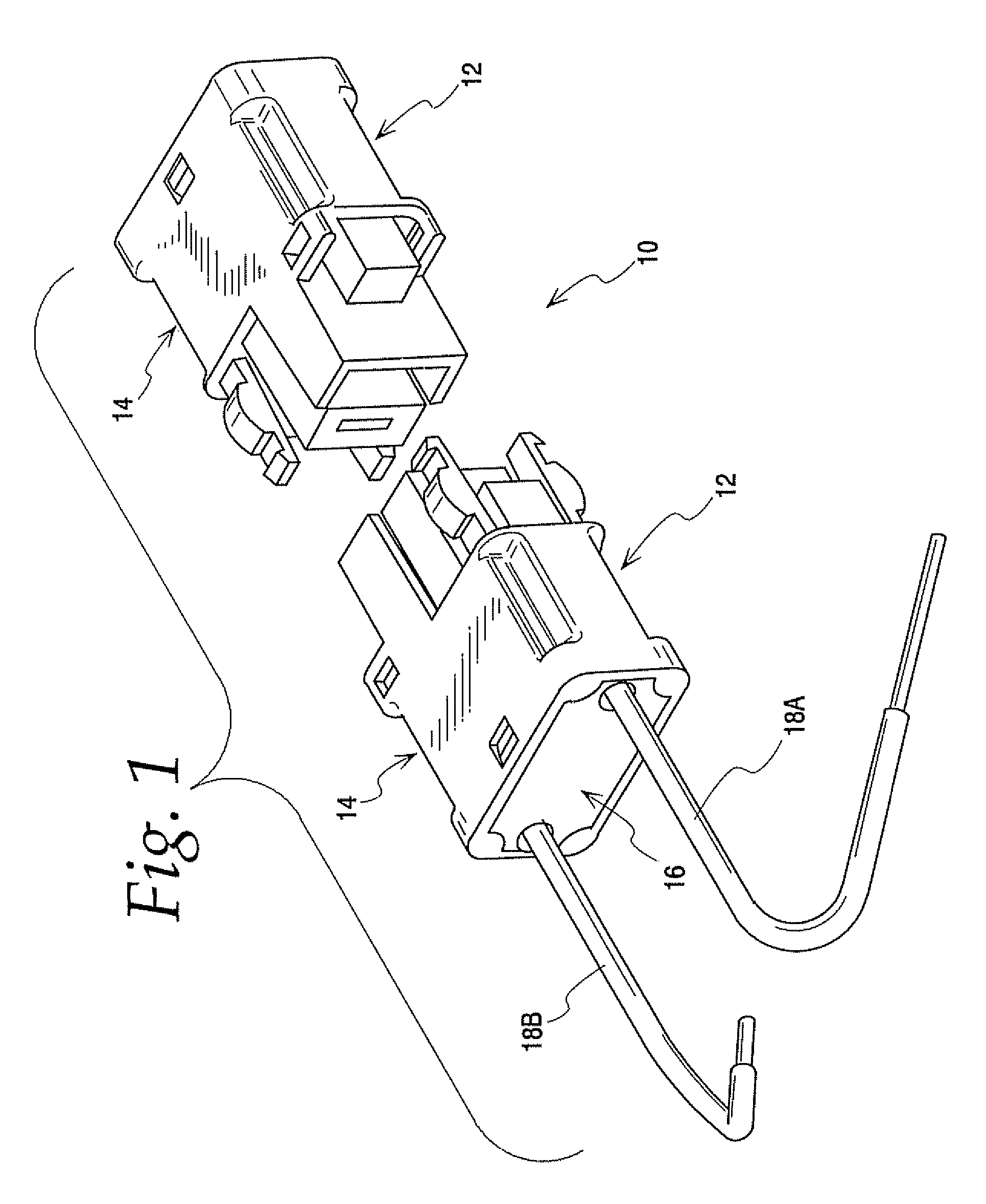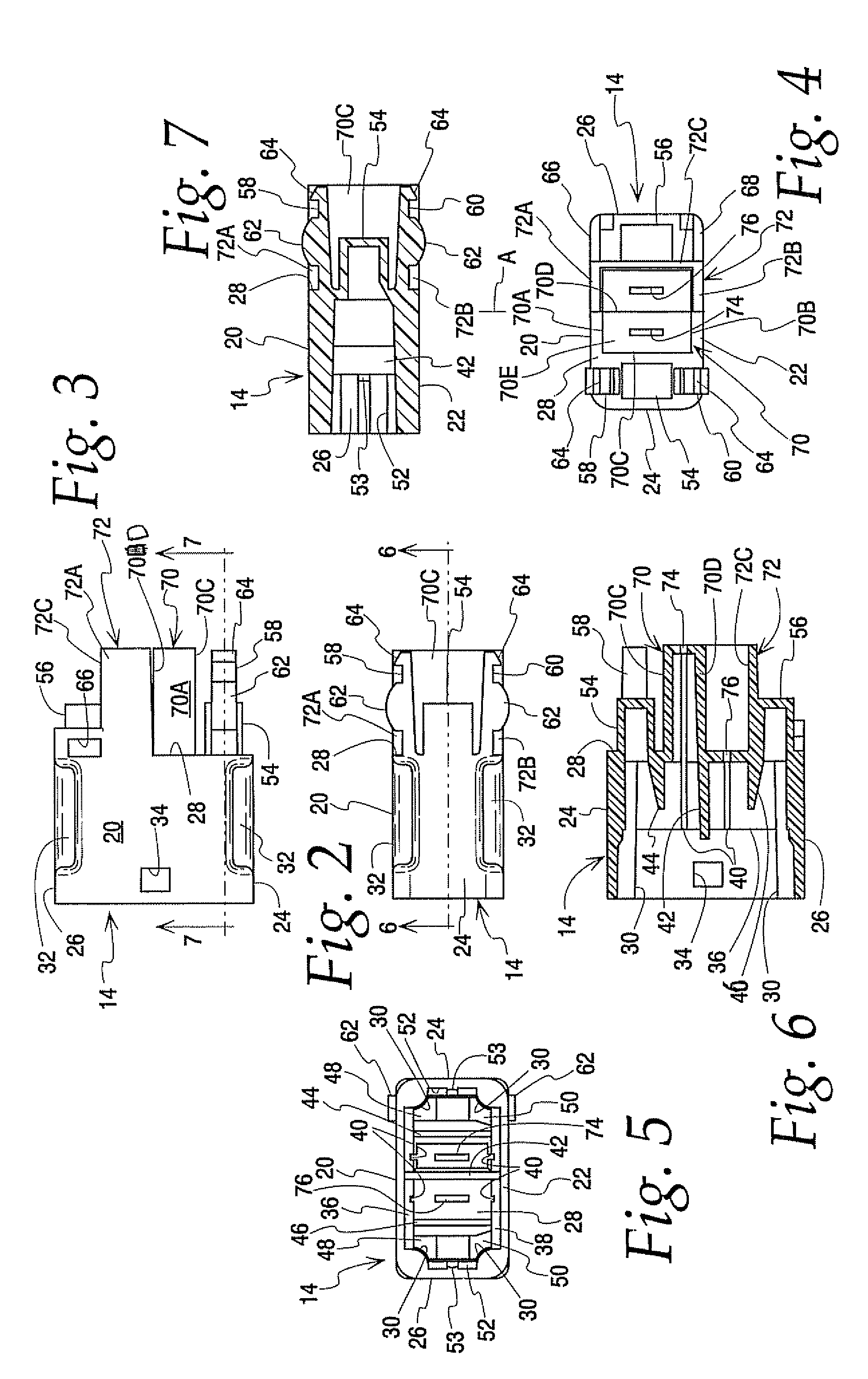Electrical Disconnect With Push-In Connectors
a technology of push-in connectors and electrical disconnects, which is applied in the direction of multiple conductor connectors, coupling contact members, coupling device connections, etc., can solve the problems of high labor costs of crimping and assembling connectors, inability to move the power to the fixture, and inability to carry the fixture down. , to achieve the effect of preventing shorting, preventing stranded wires from falling off, and enhancing safety
- Summary
- Abstract
- Description
- Claims
- Application Information
AI Technical Summary
Benefits of technology
Problems solved by technology
Method used
Image
Examples
Embodiment Construction
[0076]FIG. 1 illustrates the electrical disconnect of the present invention generally at 10. The complete disconnect includes two identical enclosures 12. Each enclosure includes a housing 14 and a cap 16. The housing can be thought of as a generally five-sided shell with a sixth, outer side that is open to a hollow interior. The cap 16 fits into the shell to close the otherwise open outer end of the housing. Each enclosure also has mounted therein male and female contacts (not shown in FIG. 1). The contacts each have a wire engaging finger at their outer ends and one of a blade or socket at the inner ends. First and second extensions at the inner end of the housing enclose the socket and blade. Wires 18A and 18B electrically connect to the contacts with push-in connections. That is, bare conductors at the ends of the wires are pushed into ports in the cap 16 and engage the finger of a contact. The housing extensions can be releasably plugged into one another to electrically connect...
PUM
 Login to View More
Login to View More Abstract
Description
Claims
Application Information
 Login to View More
Login to View More - R&D
- Intellectual Property
- Life Sciences
- Materials
- Tech Scout
- Unparalleled Data Quality
- Higher Quality Content
- 60% Fewer Hallucinations
Browse by: Latest US Patents, China's latest patents, Technical Efficacy Thesaurus, Application Domain, Technology Topic, Popular Technical Reports.
© 2025 PatSnap. All rights reserved.Legal|Privacy policy|Modern Slavery Act Transparency Statement|Sitemap|About US| Contact US: help@patsnap.com



